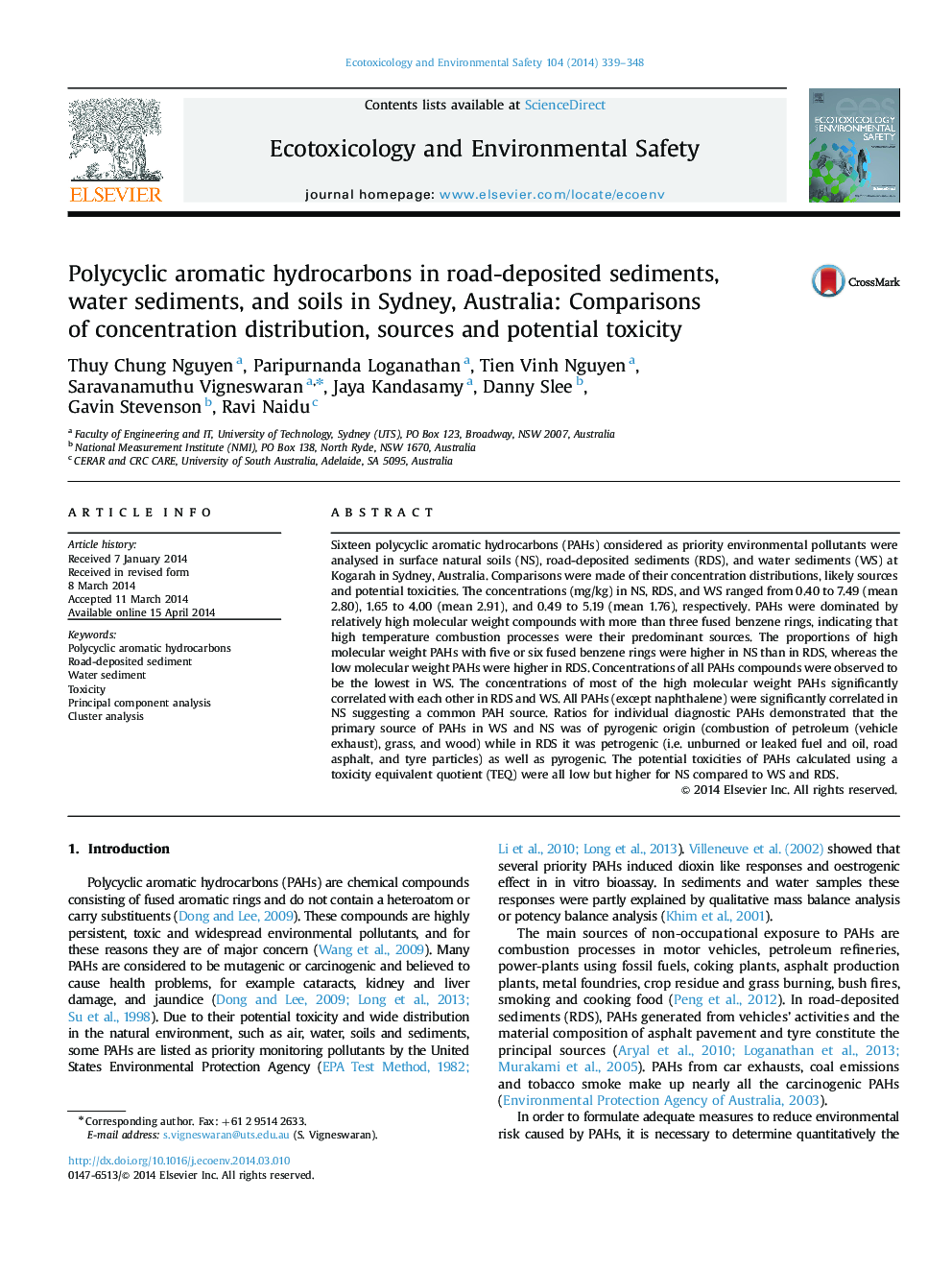| Article ID | Journal | Published Year | Pages | File Type |
|---|---|---|---|---|
| 4420165 | Ecotoxicology and Environmental Safety | 2014 | 10 Pages |
•Road-deposited sediments (RDS) had less percent higher molecular weight PAHs than in soils.•Low molecular weight PAHs percent were higher in RDS than in soils and water sediments.•PAHs in RDS originated from both pyrogenic and petrogenic sources.•PAHs in soils and water sediments were mainly derived from pyrogenic sources.•PAHs levels were similar to those in 70 worldwide sites and less than those in six sites.
Sixteen polycyclic aromatic hydrocarbons (PAHs) considered as priority environmental pollutants were analysed in surface natural soils (NS), road-deposited sediments (RDS), and water sediments (WS) at Kogarah in Sydney, Australia. Comparisons were made of their concentration distributions, likely sources and potential toxicities. The concentrations (mg/kg) in NS, RDS, and WS ranged from 0.40 to 7.49 (mean 2.80), 1.65 to 4.00 (mean 2.91), and 0.49 to 5.19 (mean 1.76), respectively. PAHs were dominated by relatively high molecular weight compounds with more than three fused benzene rings, indicating that high temperature combustion processes were their predominant sources. The proportions of high molecular weight PAHs with five or six fused benzene rings were higher in NS than in RDS, whereas the low molecular weight PAHs were higher in RDS. Concentrations of all PAHs compounds were observed to be the lowest in WS. The concentrations of most of the high molecular weight PAHs significantly correlated with each other in RDS and WS. All PAHs (except naphthalene) were significantly correlated in NS suggesting a common PAH source. Ratios for individual diagnostic PAHs demonstrated that the primary source of PAHs in WS and NS was of pyrogenic origin (combustion of petroleum (vehicle exhaust), grass, and wood) while in RDS it was petrogenic (i.e. unburned or leaked fuel and oil, road asphalt, and tyre particles) as well as pyrogenic. The potential toxicities of PAHs calculated using a toxicity equivalent quotient (TEQ) were all low but higher for NS compared to WS and RDS.
